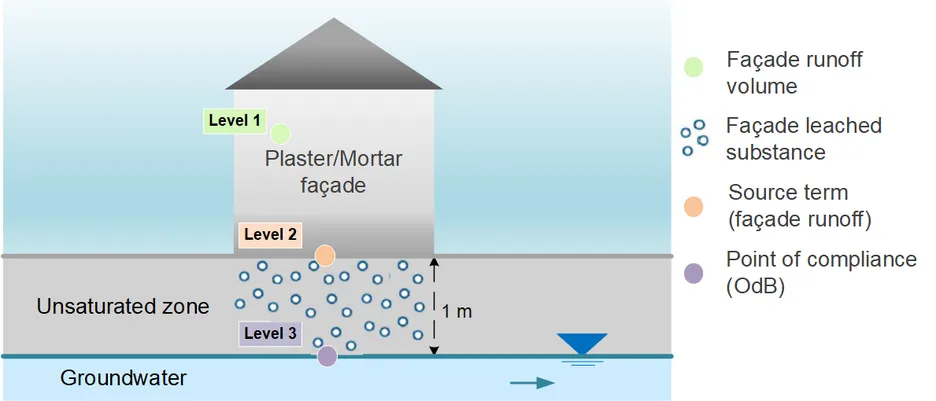Development of a Model to Assess the Environmental Properties of Common Outdoor Plasters and Mortars
Building products such as plasters and mortars are largely used on the outside of the buildings (e.g. mineral and organically bound plasters on masonry, thermal insulation composite systems, masonry mortars and other substrates). When these products are used outside, they are exposed to precipitation and ambient air. The leaking of rainwater dissolves the ingredients from the plasters and mortars and releases them. Since not every substance has an environmentally hazardous potential, the release of substances from construction products in contact with rainwater does not necessarily imply a negative impact on the environment. However, the evaluation of the leaching behavior of plasters and mortars in the case of a rainy façade is not yet possible, as there is no transfer model to conclude from the results of leaching tests on the actual deterioration of soil and groundwater.
The main objective of the project in 2022 was to model the transport of four organic parent compounds (PCs) which are in façade runoff, namely carbendazim, diuron, octylisothiazolinone (OIT), and terbutryn, as well as 10 of their transformation products (TPs) within an unsaturated soil compartment (sandy or loamy/silty/clayey soil) until they reached a point of compliance (OdB). is to create a model that can describe the leaching mechanism of contaminants in a plaster and mortar facade during a random rainfall event. On this basis, an evaluation of the environmental characteristics should be carried out.
It was found that the model delivered concentrations of PCs at the OdB are, with exception of OIT, higher than the suggested value of 0.1 μg/L, independently if it is only sandy or loamy/silty/clayey soil according to the general conditions of the GRA. However, by including an appropriate topsoil layer with an organic content of 2% the concentrations of the PCs can be reduced significantly.

| Project Leader | Prof. Dr. Brigitte Helmreich |
| Researcher | Pablo Vega, Dr. -Ing. |
| Funding | Associations for Insulation Systems, Plasters and Mortars Germany |
| Collaboration | Fraunhofer Institute for Building Physics |